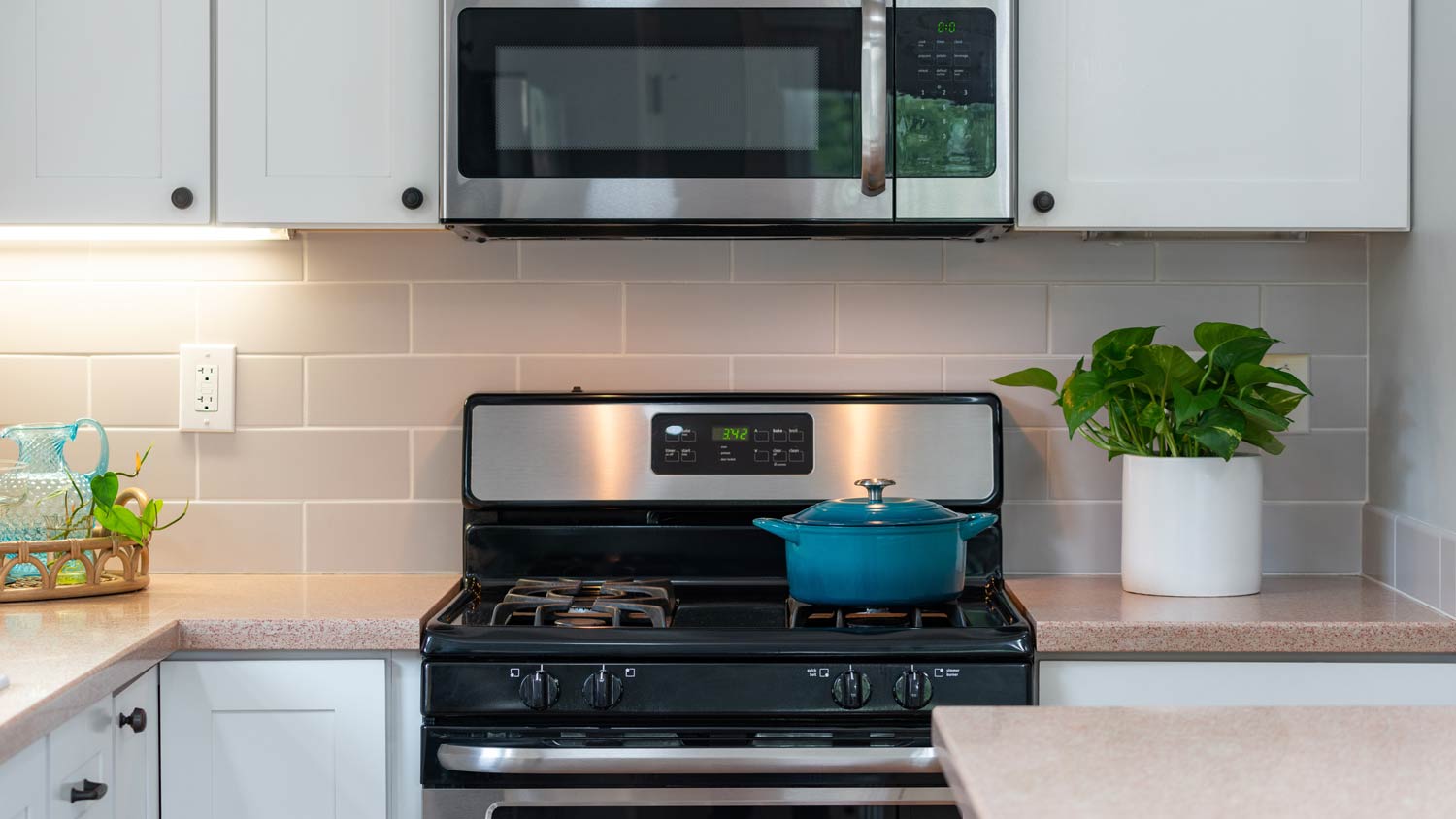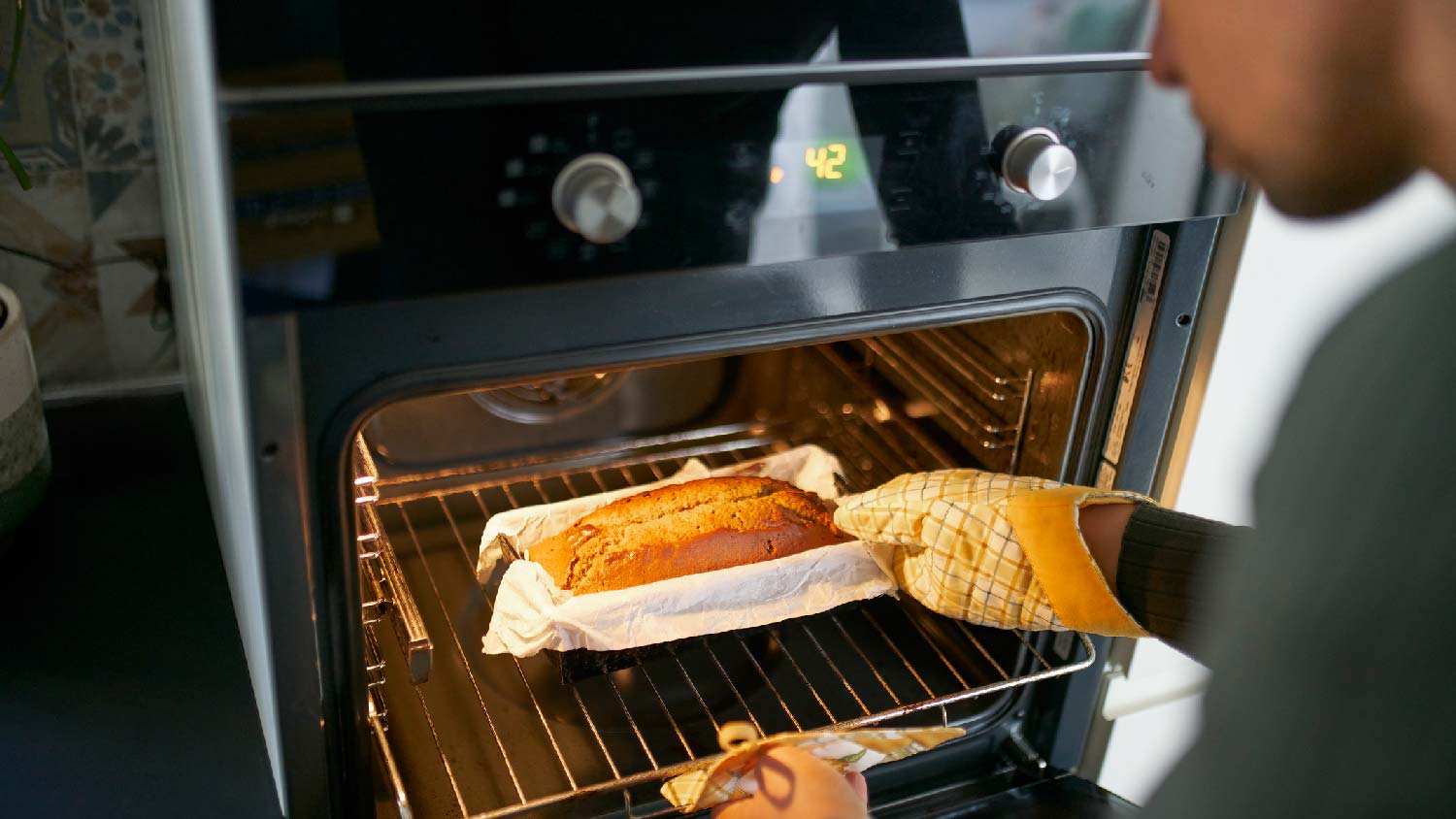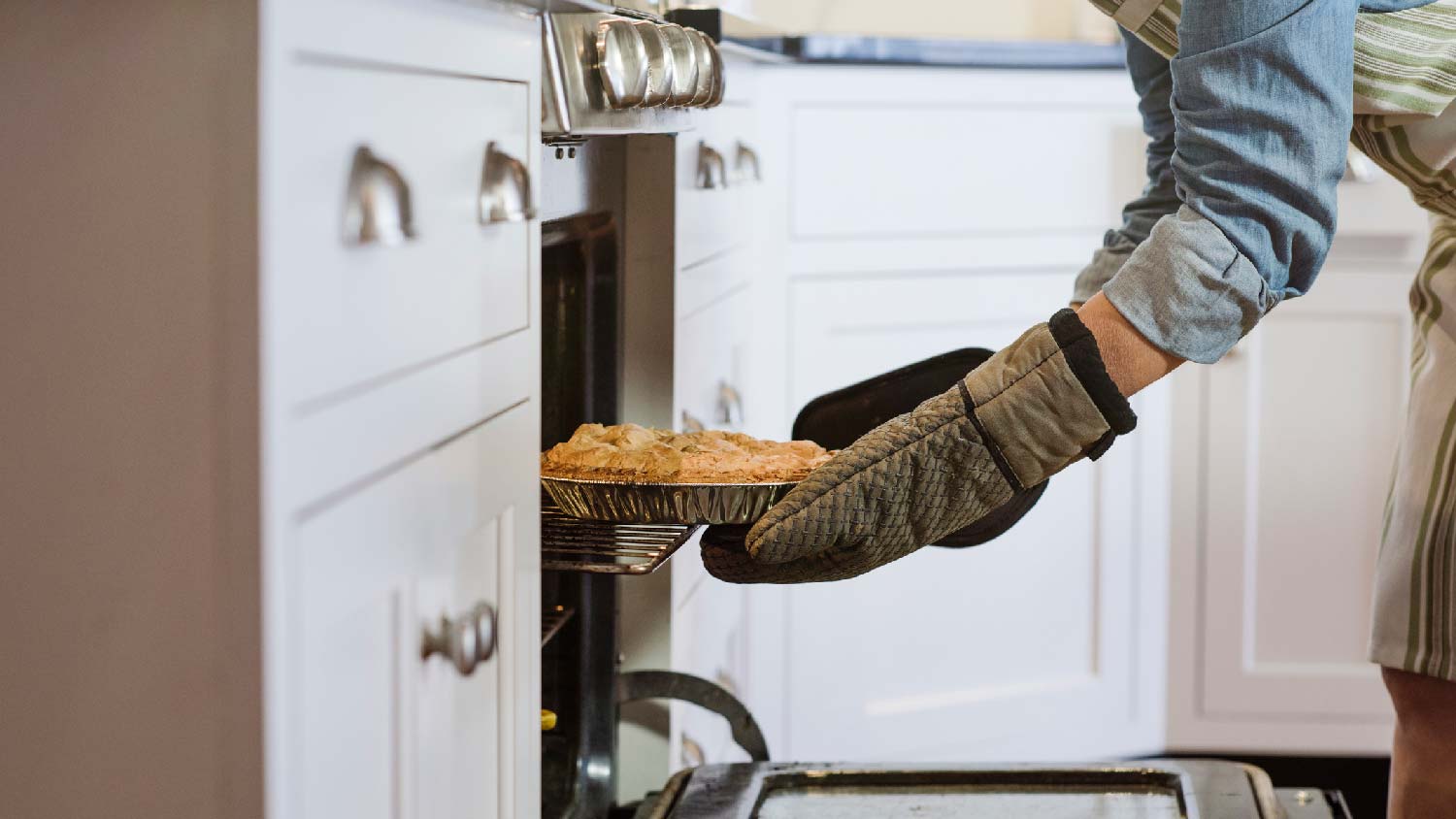How to Install a Garbage Disposal and Remove an Old One
Washing the dishes is about to get a whole lot easier


Tired of reaching into the sink strainer to pull out bits of food washed off the dishes? A new garbage disposal just may solve all of your food-scrap problems. And it’s actually possible to get one without hiring a local plumber with this guide on how to install a garbage disposal.
Difficulty: Intermediate (3/5)
If you’re a skilled DIYer, this project should be relatively simple to complete. If you’re new to DIY life, this project will be challenging, but you should still be able to do it as long as you carefully follow the manufacturer’s instructions.
If you have to add an electrical outlet underneath the sink or cut your existing sink pipes to make your new garbage disposal fit, we recommend hiring a professional.
Total project time: 4–6 hours
Cost: about $50–$350 depending on the disposal model
A new garbage disposal installation costs as low as about $50 if you can do the job yourself. Otherwise, expect to pay a professional anywhere from $150 to $950 to install a new one.
Tools
Screwdriver/disposal wrench
Hacksaw/tubing cutter (only if you need to cut pipes)
Pliers
Putty knife or scraper
Materials
Garbage disposal
Plumber’s putty
PVC primer (only if you need to install new pipe connections)
Rags
Empty bucket
How to Install a New Garbage Disposal

As with any DIY project, it’s important to follow the manufacturer’s instructions. But here are the basic steps to follow if you’re trying to install a garbage disposal in a sink that doesn’t have one.
1. Turn Off Your Water, and Remove the Drain and Pipes
Turn off your water and place a bucket underneath the sink to catch any water in the pipes.
Remove the P-trap and dump the water inside into your bucket. You may need to use a wrench on the compression fittings if they’re tight.
Remove the sink drain pipe using the wrench.
Remove the metal drain from the sink.
2. Turn Off Power and Hardwire or Plug in the Disposal Unit
Garbage disposals are powered one of two ways: either hardwired directly into a dedicated circuit or plugged into a wall outlet beneath the sink.
Hardwired disposals are connected to a switch that is installed in an electrical box or a junction box inside the sink cabinet. Plug-in disposals plug into an outlet that is controlled by a wall switch, typically located on the wall near the sink.
For a hardwired disposal:
Turn off power to the outlet beneath your sink using the house’s main circuit breaker. Use a circuit tester to make sure the power is off.
Remove the cover plate that is located beneath your unit.
Attach the wires according to the manufacturer’s instructions. In general, you’ll connect wires that are the same color—white to white, black to black, and the green wire to the disposal's grounding screw, which is located in the plate.
For a plug-in disposal:
Simply connect the power cord to the outlet.
Important: Often, you can find electricity inside your sink cabinet already because the dishwasher is located next door. If you don’t have any electricity inside your sink, you’ll need to call a local electrician to add it.
3. Insert the Drain Flange
Garbage disposals typically require a new sink drain flange—a metal part that connects the sink opening to the drain pipe.
Use your putty knife to remove any old plumber’s putty from around the sink opening where the old drain sat.
Apply a 1/2-inch bead of new plumber’s putty around the new flange.
Place the new flange in the sink drain hole from above the sink.
4. Install the Mounting Ring
Have a partner hold the flange in place at the top of the sink while you install the garbage disposal mounting ring from below. Alternatively, place a towel on top of the newly inserted flange, and then place a heavy object on top of the towel to hold the flange in place.
Screw the mounting ring in place. Slip the rubber/fiber gasket up the bottom of the sink flange, then tighten the mounting screws. Tighten each screw a little at a time to pull the ring up evenly against the bottom of the sink basin.
Check to see that the ring sits evenly against the sink with little to no gaps in between the ring unit and the bottom of the sink basin.
5. Hang the Disposal Unit
Lift the garbage disposal and insert the top end of the mounting gasket into the mounting assembly. Make sure the disposal outlet pipe faces the drain pipe connection.
Insert a screwdriver into the mounting lug on the lower mounting ring.
Turn the unit clockwise until the disposer is locked into place. It should feel snug when it’s installed properly.
Tip: If you’re installing a unit that doesn’t quite fit with your existing pipes, you may have to cut some of your pipes with a hacksaw/tubing cutter and potentially add some new pipe connections.
6. Install the Drain Lines (Connect to P-trap)
Attach the P-trap to the tailpiece and trap arm.
Insert the disposal’s discharge tube—aka disposal outlet pipe—into the P-trap fitting. Do not fully tighten the slip nut.
Insert the other end of the discharge tube into the garbage disposal unit.
Use a screwdriver to secure the metal flange using the bolt supplied with your disposal unit.
Tip: If your new garbage disposal unit connects to the drain from your dishwasher, remove the plastic drain plug (the “knockout”) from the disposal inlet before mounting the disposal. Tap the plug with a hammer and screwdriver. Once it pops out, remove the plastic plug from inside the disposer. DO NOT remove the plug if your unit does not connect to the dishwasher.
Attach the dishwasher discharge tube to the disposal inlet when you attach the P-trap.
7. Tighten All Fasteners
Tighten all the fasteners/slip nuts at the plumbing and mount connections. Make sure your pipe fittings are tight to prevent leaks.
8. Test Your New Disposal
To make sure everything works properly and there are no leaks, it’s important to test your new disposal.
Turn your water and power back on.
Run water into the sink.
Turn on the disposer and check for leaks.
Tighten fittings if necessary.
How to Replace a Garbage Disposal
If you have an old or broken unit, you’ll need to first decide if you want to repair or replace your garbage disposal. If it’s beyond help, follow these steps on how to remove a garbage disposal.
Shut off the power to your existing disposal at the main circuit breaker. If your disposer plugs into the wall, unplug it. When in doubt, shut off the power to the entire house. Use a circuit tester to check that the power is off.
Shut off the water to the sink, and place a bucket under the disposer.
Disconnect the drain trap and remove the discharge tube. If your disposal has a drain tube connected to your dishwasher, remove that too.
Detach the disposal from the mounting ring. Insert a screwdriver into the old mounting ring and unlatch the disposal unit. Carefully lower it.
If your old disposal is hardwired, remove the electrical cover plate and detach the electrical connections. Again, it is important to make sure the power is turned off.
If you need to install a new mounting assembly, remove the old one by loosening the mounting screws and prying off the mounting ring.
From above the sink drain, remove the old sink flange. Scrape off any old plumber’s putty with a putty knife.
To replace your old unit with a new one, start with Step 2 under How to Install a New Garbage Disposal.





- Appliance Repair Companies
- Washing Machine Repair
- Dryer Repair
- Refrigerator Repair
- Dishwasher Repair
- Oven Repair
- Wood & Pellet Stove Repair
- Freezer Repair Services
- Wood Stove Services
- Gas Stove Repair
- Emergency Appliance Repair Companies
- Ice Maker Repair
- Gas Appliance Repair
- GE Appliance Repair
- GE Refrigerator Repair
- GE Dryer Repair
- GE Dishwasher Repair
- GE Washing Machine Repair
- Samsung Appliance Repair
- Samsung Refrigerator Repair
- Samsung Dryer Repair
- Samsung Washer Repair
- Samsung Dishwasher Repair
- Samsung Oven Repair
- Whirlpool Repair
- Whirlpool Refrigerator Repair
- Whirlpool Washer Repair
- Whirlpool Dryer Repair
- Whirlpool Oven Repair
- Maytag Appliance Repair
- Maytag Refrigerator Repair
- Maytag Washer Repair
- Maytag Dryer Repair
- Maytag Dishwasher Repair
- Kitchenaid Appliance Repair
- Kitchenaid Oven Repair
- Kitchenaid Refrigerator Repair
- Kenmore Appliance Repair
- Kenmore Dishwasher Repair
- Kenmore Washer Repair
- Kenmore Dryer Repair
- LG Refrigerator Repair
- Bosch Appliance Repair
- Kenmore Refrigerator Repair
- LG Appliance Repair Services
- GE Microwave Repair
- Electrolux Appliance Repair
- Electrolux Washer Repair
- Kitchenaid Dishwasher Repair Services
- Wood Stove Inspection
- Dishwasher Installation
- Trash Compactor Repair
- Who Installs Garbage Disposals? Here’s Who to Call
- Top 5 Reasons Your Garbage Disposal Is Leaking
- How to Unclog Your Garbage Disposal Quickly and Easily
- Garbage Disposal Not Working? Here Are 8 Reasons Why—And Solutions
- What Size Garbage Disposal Do I Need?
- 8 Troubleshooting Tips to Keep Handy If You Have a Garbage Disposal
- Do You Need a Garbage Disposal for a Dishwasher?
- When Should I Repair vs. Replace My Garbage Disposal?
- How Long Do Garbage Disposals Last? Here’s the Average Lifespan
- Who Fixes Garbage Disposals? Here’s Who to Hire










